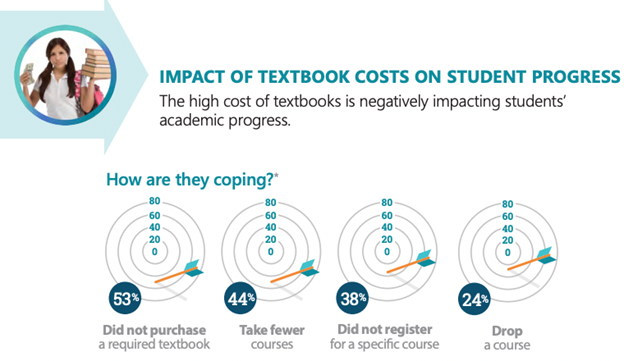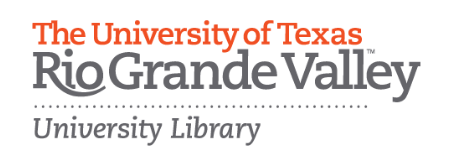Benefits for Students
Using OER can both provide tremendous cost savings for students and impact student success and completion rates. The cost of textbooks can be a huge financial burden on students, which not only affects student success, but could also delay graduation for students who are taking fewer classes per term because of that cost, further increasing financial costs for students over time. OER provide students with day-one access to free course materials, and research reviewed by the Open Education Group shows that most students perform as well or better using OER course materials compared with students using traditional textbooks.

Student engagement and advocacy are other key benefits of OER. Including your students’ voices in the conversation surrounding affordability and inclusive course materials is critical. Consider reaching out to your Student Government Association and other student groups to get them involved. National groups like Student PIRG have an active campaign on textbook affordability with resources and strategies for students to use. Faculty and administrators can also invite students to serve on planning committees related to OER and textbook affordability. Other ideas for student engagement and advocacy can be found in these resources:
- CCCOER Student Planning
- BCCampus OER Student Toolkit – an advocacy guide for student leaders
- OER Student Advocate Toolkit – created by OER Student Advocate Leaders in the California Community College (CCC) System and the California State University (CSU) System
- UTA Student Government OER Outreach
Additionally, the OER in Texas Statewide Playbook includes a module on building institutional infrastructure, including developing an OER Coalition that includes student leaders.
Using open educational resources in the classroom can make it easier for students to access and interact with course materials. However, another major aspect of Open Education asks not “what you teach with” but “how you teach.” The set of pedagogical practices that include engaging students in content creation and making learning accessible is known as Open Pedagogy (see Unit 9 for more info).
We might think about Open Pedagogy as an access-oriented commitment to learner-driven education AND as a process of designing architectures and using tools for learning that enable students to shape the public knowledge commons of which they are a part. We might insist on the centrality of the 5 Rs to this work, and we might foreground the investments that Open Pedagogy shares with other learner-centered approaches to education. – DeRosa & Jhangiani, 2017

